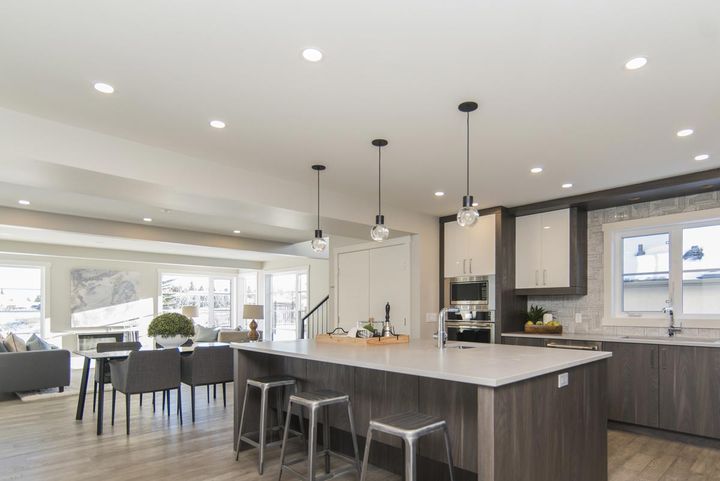A Beginner's Guide to Recessed Lighting: Everything You Need To Know

When done right, recessed lighting can give a room character. Also called can lights or downlights, they are usually the perfect choice for lighting rooms with lower ceilings; mainly kitchens, offices and living rooms in general. This guide is here to provide you with everything you should need to know when you want to install recessed lighting into your home.
New Construction or Remodel
The first thing to know is if your project is new construction or a remodel. This will help determine which recessed lighting is the best choice for you.
New construction housings are the correct choice when you have space around the area where the light is going to fit. The following should be considered when doing new construction:
- If you are building in a new space and have full access to the wall, ceiling, and floor without plaster or sheet rock preventing you from reaching those areas.
- The other thing to consider is if you have access to space due to an attic or pop out ceiling panel. New construction housings are bulkier, and therefore require more room to install onto hanger bars or between joist beams.
Housing
You can find different types of housing for recessed lighting. The most common are gimbal (eye) that can move and regular downlights that do not move. Gimbals are great for when you want to adjust where the lighting projects, and regular downlights are good for when you just want to light an area.
IC or Non-IC
IC, or insulation contact rated, and Non-IC are important to consider when installing downlights. IC rated fixtures are able to come into contact with thermal insulation, while Non-IC are not rated to come into contact with thermal insulation. Because of this, Non-IC are recommended to be installed when there is at least 3 inches of space between fixture and insulation in ceiling.
120V or 12V
There are two different kinds of voltage for hooking up your recessed lighting. There is line voltage (120V) and low voltage (12V). Line voltage is the normal household 120 voltage, and is the most common. Transformers or special dimmers are not required for these fixtures.
Low voltage fixtures are a lot less common, and uses 12V instead of 120V to power the device. A special transformer is needed reduce the voltage and special dimmers are also required for the device. These are also more expensive, and therefore not nearly as cost effective as line voltage recessed lighting.
Recessed Lighting Size
Sizes of recessed lighting housing can range from 3 to 6 inches. Three and four inch fixtures are normally used for task and accent lighting on lower ceilings. Five inch downlights are good for general lighting purposes. Six inch trims are the most common, and light the most area. They are built to accommodate a wide range of applications throughout your home.
Installation of Downlights
Please refer to the installation document for each individual recessed lighting fixture. If necessary, please contact a local electrician for more information or assistance.
Hopefully this short guide is able to provide you with some useful information for your next recessed lighting project. Don't forget to follow us on Facebook to see more deals and articles, and keep checking back here for more blog postings!
You can also find more information about common terminology here.



